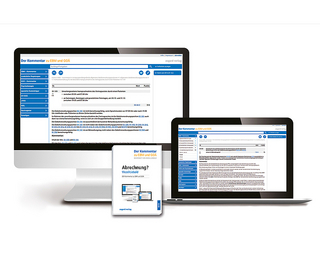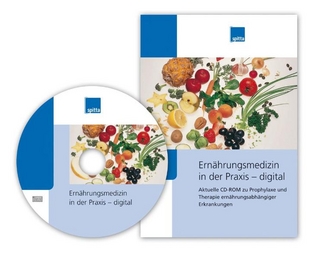
Molecular Biology in Cellular Pathology
John Wiley & Sons Inc (Hersteller)
978-0-470-86794-5 (ISBN)
- Keine Verlagsinformationen verfügbar
- Artikel merken
The latest edition of this highly successful text, covers the major advances in the methods used in cellular and molecular pathology. In recent years, knowledge of the molecular organization of the cell has led to the development of powerful new techniques that bring greater accuracy and objectives to the diagnosis, prognosis and management of many diseases and to the study of pathological states. This book describes the latest molecular techniques available for the analysis of diseases. In particular it includes new techniques using fluorescent dyes, DNA microarrays, protein chemistry, and mass spectrometry. It also incorporates information from the Human Genome Project, and the new disciplines of genomics and proteomics, where relevant to pathology. Color plates are a new feature of this edition, illustrating the advances in fluorescence labeling of cells.
John Crocker is the editor of Molecular Biology in Cellular Pathology, published by Wiley. Paul G. Murray is the editor of Molecular Biology in Cellular Pathology, published by Wiley.
Preface. Preface to Molecular Biology in Histopathology. List of Contributors. Chapter 1. Blotting Techniques: Methodology and Applications (Fiona Watson and C. Simon Herrington). 1.1 Introduction. 1.2 Blotting techniques. 1.3 References. Chapter 2. In-situ Hybridisation in Histopathology (Gerald Niedobitek and Hermann Herbst). 2.1 Introduction. 2.2 Experimental conditions. 2.3 Probes and labels. 2.4 Controls and pitfalls. 2.5 Double-labelling. 2.6 Increasing the sensitivity of ISH. 2.7 What we do in our laboratories. 2.8 Applications of ISH: examples. 2.9 Perspective. 2.10 References. Chapter 3. DNA Flow Cytometry (M. G. Ormerod). 3.1 Introduction. 3.2 Definitions and terms. 3.3 Dye used for DNA analysis. 3.4 Sample preparation for DNA analysis. 3.5 Analysis of the DNA histogram. 3.6 Quality control. 3.7 Computer analysis of the DNA histogram. 3.8 Multiparametric measurement. 3.9 Acknowledgements. 3 .10 References. Chapter 4. Interphase Cytogenetics (Sara A. Dyer and Jonathan J. Waters). 4.1 Introduction. 4.2 Interphase cytogenics. 4.3 Applications. 4.4 Conclusion. 4.5 References. Chapter 5. Oncogenes (Fiona Macdonald). 5.1 Introduction. 5.2 Identification of the oncogenes. 5.3 Functions of the oncogenes. 5.4 Mechanism of oncogene activation. 5.5 Oncogenes in colorectal cancer. 5.6 Oncogenes in breast cancer. 5.7 Oncogenes in lung cancer. 5.8 Oncogenes in haematological malignancies. 5.9 Other cancers. 5.10 Conclusion. 5.11 References. Chapter 6. Molecular and Immunological Aspects of Cell Proliferation (Karl Baumforth and John Crocker). 6.1 The cell cycle and its importance in clinical pathology. 6.2 Molecular control of the cell cycle. 6.3 Cell cycle control. 6.4 The cell cycle and cancer. 6.5 Immunocytochemical markers of proliferating cells. 6.6 References. 6.7 Further reading. Chapter 7. Interphase Nucleolar Organiser Regions in Tumour Pathology (Massimo Derenzini, et al.). 7.1 Introduction. 7.2 The AgNORs. 7.3 NOR silver-staining. 7.4 Quantitative AgNOR analysis. 7.5 AgNORs as a parameter of the level of cell proliferation. 7.6 Application of the AgNOR technique to tumour pathology. 7.7 What future for AGNORs in tumour pathology. 7.8 References. Chapter 8. Apoptosis and Cell Senescence (Lee B. Jordan and David J. Harrison). 8.1 Introduction. 8.2 Apoptosis. 8.3 Cell senescence. 8.4 Summary. 8.5 References. Chapte 9. The Polymerase Chain Reaction (Timothy Diss). 9.1 Introduction. 9.2 Principles. 9.3 Analysis of products. 9.4 RT-PCR. 9.5 Quantitative PCR. 9.6 DNA and RNA extraction. 9.7 Correlation of the PCR with morphology. 9.8 Problems. 9.9 Applications. 9.10 Diagnostic applications. 9.11 Infectious diseases. 9.12 Identity. 9.13 The future. 9.14 References. 9.15 Online information. Chapter 10. Laser Capture Microdissection: Techniques and Applications in the Molecular Analysis of the Cancer Cell (Amanda Dutton, et al.). 10.1 Introduction. 10.2 The principle of LCM. 10.3 Technical considerations. 10.4 Advantages and disadvantages of LCM. 10.5 Applications of LCM. 10.6 Future perspectives. 10.7 Acknowledgements. 10.8 References. Chapter 11. The In-situ Polymerase Chain Reaction (John J. O'Leary, et al.). 11.1 Introduction. 11.2 Overview of the methodology. 11.3 In-cell PCR technologies. 11.4 In-cell amplification of DNA. 11.5 In-cell amplification of RNA. 11.6 References. Chapter 12. TaqMan(r) Technology and Real-Time Polymerase Chain Reaction (John J. O'Leary, et al.). 12.1 Introduction. 12.2 Probe technologies. 12.3 TaqMan(r) probe and chemistry. 12.4 TaqMan(r) PCR conditions. 12.5 Interpretation of results. 12.6 Relative quantitation. 12.7 References. Chapter 13. Gene Expression Analysis Using Microarrays (Sophie E. Wildsmith and Fiona J. Spence). 13.1 Introduction. 13.2 Microarray experiments. 13.3 Data analysis. 13.4 Recent examples of microarray applications. 13.5 Conclusions. 13.6 Acknowledgements. 13.7 References. 13.8 Further reading. 13.9 Useful websites. Chapter 14. Comparative Genomic Hybridisation in Pathology (Marjan M. Weiss, et al.). 14.1 Introduction. 14.2 Technique. 14.3 Data analysis. 14.4 Applications. 14.5 Clinical applications. 14.6 Screening for chromosomal abnormalities in fetal and neofetal genomes. 14.7 Future perspectives. 14.8 References. Chapter 15. DNA Sequencing and the Human Genome Project (Philip Bennett). 15.1 Introduction. 15.2 DNA sequencing: the basics. 15.3 Applications of DNA sequencing. 15.4 The Human Genome Project. 15.5 Further reading. 15.6 Useful websites. Chapter 16. Monoclonal Antibodies: The Generation and Application of 'Tools of the Trade' Within Biomedical Science (Paul N. Nelson, et al.). 16.1 Introduction. 16.2 Antibodies and antigens. 16.3 Polyclonal antibodies. 16.4 Monoclonal antibody development. 16.5 Monoclonal antibody variants. 16.6 Monoclonal antibody applications. 16.7 Specific applications. 16.8 Therapy. 16.9 Specific applications. 16.10 Conclusions. 16.11 Acknowledgements. 16.12 References. Chapter 17. Proteomics (Kathryn Lilley, et al.). 17.1 Introduction. 17.2 Definitions and applications. 17.3 Stages in proteome analysis. 17.4 Future directions. 17.5 References. Index.
| Erscheint lt. Verlag | 15.8.2003 |
|---|---|
| Verlagsort | New York |
| Sprache | englisch |
| Maße | 180 x 249 mm |
| Gewicht | 882 g |
| Themenwelt | Medizin / Pharmazie ► Allgemeines / Lexika |
| ISBN-10 | 0-470-86794-9 / 0470867949 |
| ISBN-13 | 978-0-470-86794-5 / 9780470867945 |
| Zustand | Neuware |
| Informationen gemäß Produktsicherheitsverordnung (GPSR) | |
| Haben Sie eine Frage zum Produkt? |
aus dem Bereich

